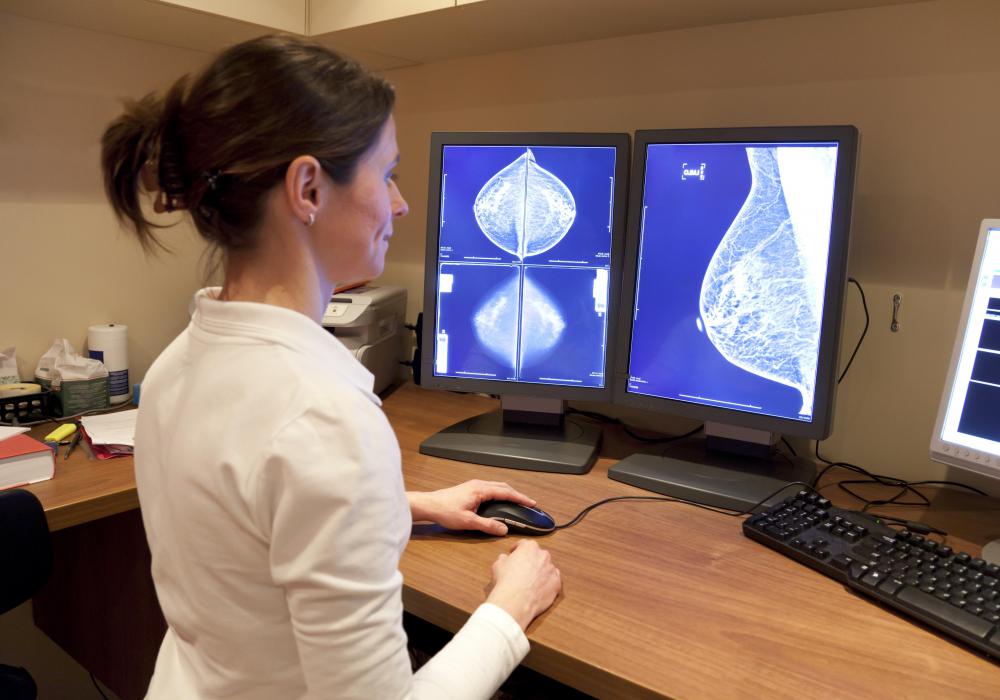At WiseGEEK, we're committed to delivering accurate, trustworthy information. Our expert-authored content is rigorously fact-checked and sourced from credible authorities. Discover how we uphold the highest standards in providing you with reliable knowledge.
What Is Breast Density?
Breast density is a measurement of how much tissue is present in the breasts, in contrast with fat. A radiologist can use a mammogram of the breast to determine the density. This information can be important for assessing cancer risk, as there is an association between density and breast cancer, and it is also harder to spot cancers on mammograms of women with dense breasts. Patients who are not sure about their breast density can ask if it has been recorded in their files, and they can also ask to see copies of their mammogram results and have them explained.
On an x-ray, fat shows up mostly black, highlighting structures within the breast, including the clots of dense tissue that can be warning signs of breast cancer. By contrast, regular tissue shows up as mostly white. It can hide small specks that indicate cancers developing in the breast, and may make it harder to assess the size and precise location of a cancer when it can be identified. Digital mammography, which uses computer programs to isolate particular areas of interest, can increase the chances of finding cancer or precancerous tissue in the breast.

Radiologists can assign a breast density score between one and four to the patient. A four is extremely dense, the highest rating, where 75% or more of the mammogram includes dense tissue. Patients with a score of three have heterogeneously dense tissue. It is harder to spot abnormalities, but they are not necessarily rendered invisible. A score of two indicates a patient has scattered fibroglandular densities, some dense material in the mammogram, but not enough to significantly cloud it. A score of one says that the breast is comprised almost entirely of fat.

Genetics and ethnicity tend to play a role in breast density. Some women have a higher genetic chance of having dense tissue than others. Life stage is also important. Women's breasts grow less dense after childbirth and menopause, while young women who have not had children may have more density.
The connection between breast density and mammogram results is important, as a highly dense breast can be more difficult to evaluate, especially if the woman has large breasts. The doctor may need to take some extra images to get complete views of the inside of the breast, or may recommend more advanced mammography procedures to reduce the chances of missing something important. Women with dense breasts may also be advised to be extra careful with cancer screening because of their increased risk of breast cancer.
AS FEATURED ON:
AS FEATURED ON:
















Discuss this Article
Post your comments